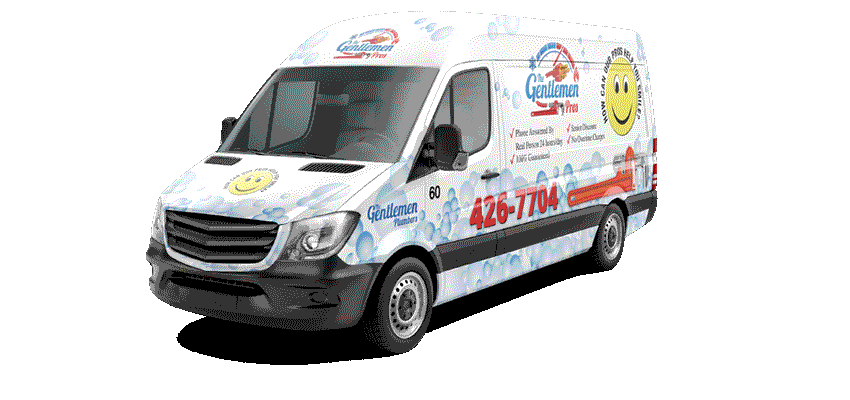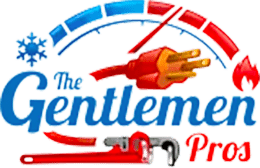We're In Your Neighborhood!

Same Day Service
Since 1992
Call The Gentleman Pros Now!
(403) 239-1943
We're In Your Neighborhood!


Same Day Service
Since 1992
Call The Gentleman Pros Now!
(403) 239-1943

Trenchless pipe repair, sometimes called pipe bursting, is a less intrusive way to replace sewer pipes. Trenchless pipe bursting lays a new pipe while simultaneously destroying the old one. It does not involve a large excavation and therefore avoids major demolition of decks, fences, and other structures.
“Brent (and Vladim) were great! Friendly, professional, timely, and great at explaining what needed to be done and were up front about pricing. Thanks for fixing our main sewer line. Definitely would recommend to friends and family!” Shakib R


While some home expenses are easy to anticipate, others sneak up on you. Sewer issues can become major expenses before you know there is a problem.
Pipe bursting is an ideal solution to replace your sewer line because it doesn’t require a major excavation.
Pipe bursting is a good solution in situations where the pipe is aged out or damaged, and a new sewer line is inevitable.
There are some situations where pipe bursting is not ideal, including when there is an issue with the slope of the pipe. If the slope of the pipe is causing a problem, then excavation and pipe replacement are needed.
Pipe bursting is a great solution when the main sewer line runs underneath structures that would require demolition if excavation were required.

The pipe bursting method is the trenchless process to replace your main sewer line.
Rather, than digging to remove and replace your old sewer line, the trenchless method typically only requires one small excavation for the entry point and an exit point.
Pipe bursting is a method that pulls a hydraulic head through the existing sewer pipe, and bursts the pipe as it is pulled through the sewer line. Simultaneously, a new pipe is pulled into place.
In Edmonton where sewer lines run deep in the ground, trenchless pipe bursting avoids a large excavation.
Most often the new pipe used in a trenchless pipe bursting is made from High-density polyethylene (HDPE). HDPE is flexible, strong yet lightweight. HDPE is the material of choice for residential sewer pipe bursting, but it is also often used in high-pressure pipelines, like oil and gas.
Pipe bursting and pipeline are two trenchless methods to repair aging sewer pipes, but there are very different.

Pipelining is a process that does not require excavation. Pipelining involves blowing a sleeve inside the existing main sewer line that is saturated in epoxy resin. The epoxy cures inside the pipe and creates a new pipe wall. The process does not require excavation. In Edmonton, pipelining is best done in warmer months, so the epoxy is cured properly.
Pipelining is not a good solution if the pipe is not holding its round shape, is collapsing, has bellies, or has a misaligned pipe joint.

The main sewer line needs to have the proper slope in order for pipelining to be a successful solution.

A pipelining is designed to last 50 years. Many factors can influence the life of any sewer line, including ground shifting from water or seismic activity.
Although trenchless, the process of pipe burst is very different than pipelining.
Pipe bursting requires excavation points, an entrance, and an exit. While the pipeliner requires the existing pipe to be intact, pipe bursting destroys the pipe as a new one is secured in its place.

In contrast to pipelining, trenchless pipe bursting is successful on pipes that have bellies and misalignments or are collapsing.
Both methods avoid the excavation required for a full pipe replacement.
HDPE, High-density polyethylene, is the material most commonly used in a trenchless pipe bursting pipe repair. HDPE pipes are designed to last 50 to 100 years. HDPE is very durable and is often used in high-pressure pipelines. HDPE was developed in the 1930s as a durable plastic that was dense, strong, and lightweight.
Although costs can vary in a trenchless pipe repair, consider that pipe bursting is a one to two-day process that will involve 3 to 4 technicians.
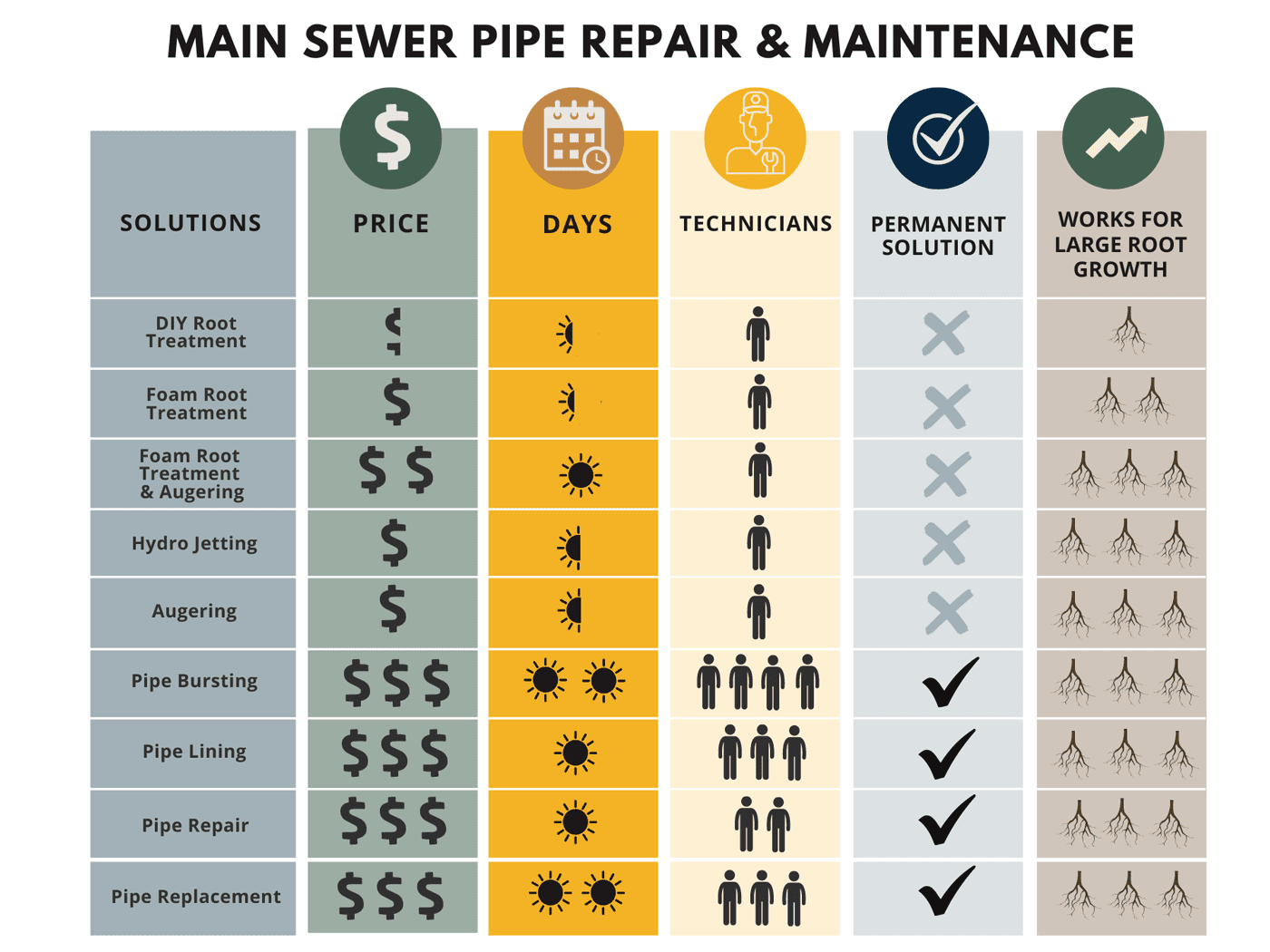
There are various reasons why sewer pipe replacement is needed. Often homeowners don’t know they have a problem with their main sewer line until there is an emergency backup.
An emergency backup is when wastewater flowing through the main sewer line is blocked, clogged, or bellied and so wastewater flows back into the home. In Edmonton that would mean flowing into the basement. Yuck!

Backups can be avoided when homeowners take the time to schedule a camera sewer inspection (link to camera inspection). Backups are usually a result of a problem in the sewer line that needs some attention.
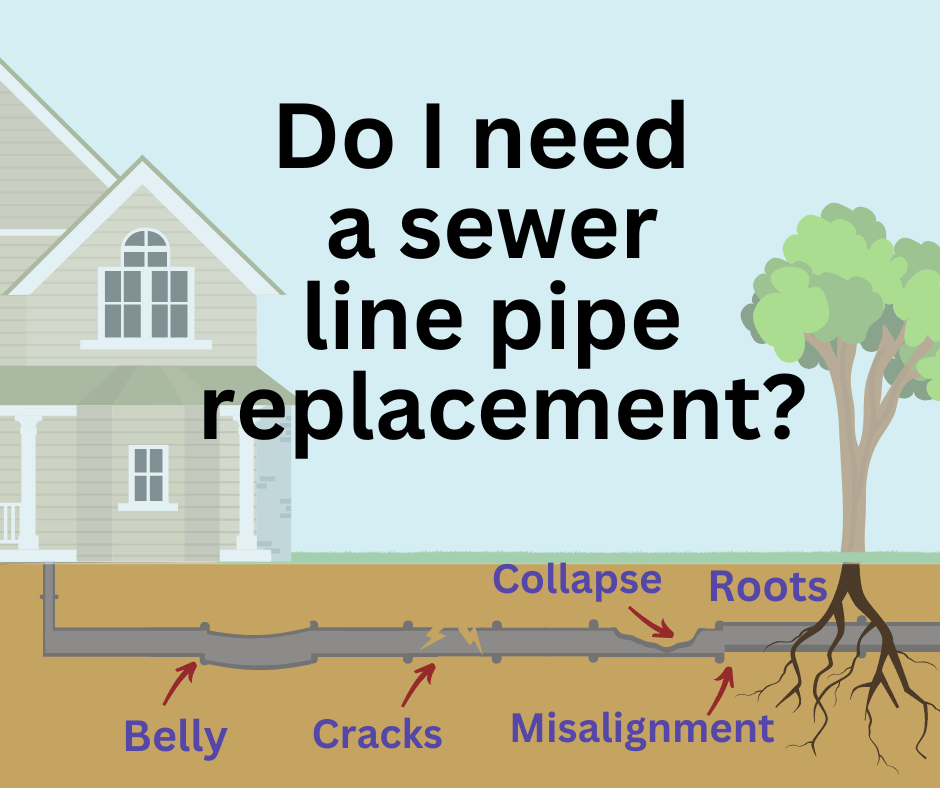
Cracks, bellies, leaks, misalignments, and roots are a few of the problems that can be found in your main sewer line.
Tree roots are a common cause of clogs in sewer lines. The tiniest crack in a sewer line pipe can allow roos to establish inside the pipe. Roots thrive in a sewer line because of the steady supply of water and fertilizer, in the form of wastewater.
Roots can be removed by ongoing maintenance, including a chemical root treatment, or clearing the sewer line with an auger or hydro jet, but they are only temporary solutions.
The only way to remove roots for good is by repairing or replacing the sewer line pipes.
A pipe belly is a sag in the main sewer line. Pipe Bellies are a result of the earth around the pipe not supporting the sewer pipe. Over time if the belly becomes severe, the pipe belly will catch waste as it moves through the sewer line. Eventually, this can cause a clog and lead to the sewer line backing up.
The only way to fix a pipe belly is a sewer pipe replacement or partial replacement.
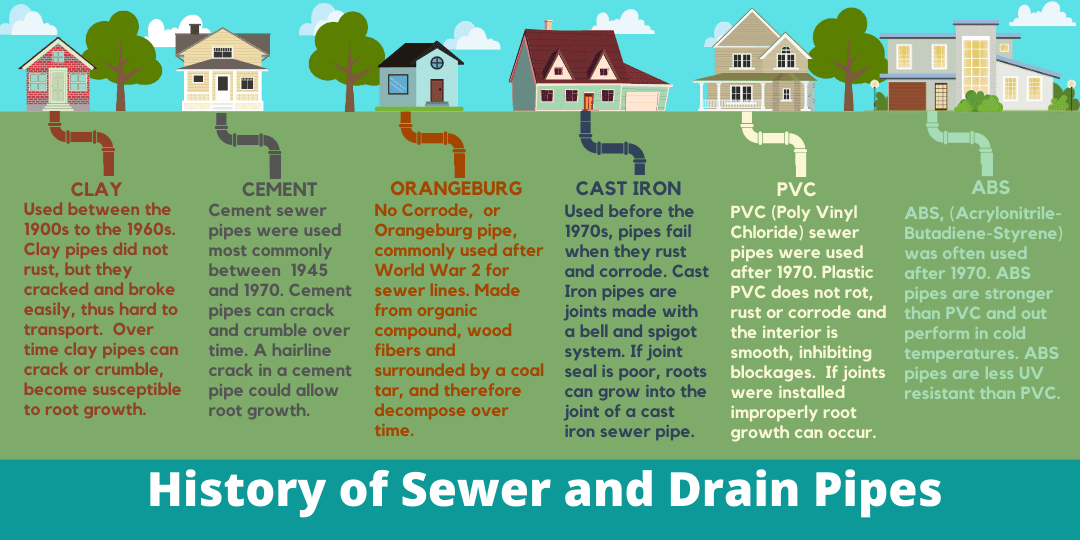
Yes, the trenchless pipe bursting method can effectively burst plastic pipes, including PVC and ABS. After 1970, plastic PV or ABS sewer pipes were commonly used for main sewer lines. When properly installed they are less likely to have issues, but they do from time to time. The projected lifespan of a PVC sewer line is 50 years.
Trenchless pipe bursting can effectively burst any main sewer line, including cast iron, clay, cement, and Orangeburg pipe in addition to plastic ABS or PVC pipe. Before 1970, various materials were more commonly used for sewer line pipes.
If your pipe is leaking because of age or damage, a permanent solution is required, such as a pipe repair or replacement.
Replacing the pipe adds years to the life of your sewer line, and prevents roots from growing into your sewer lines.
